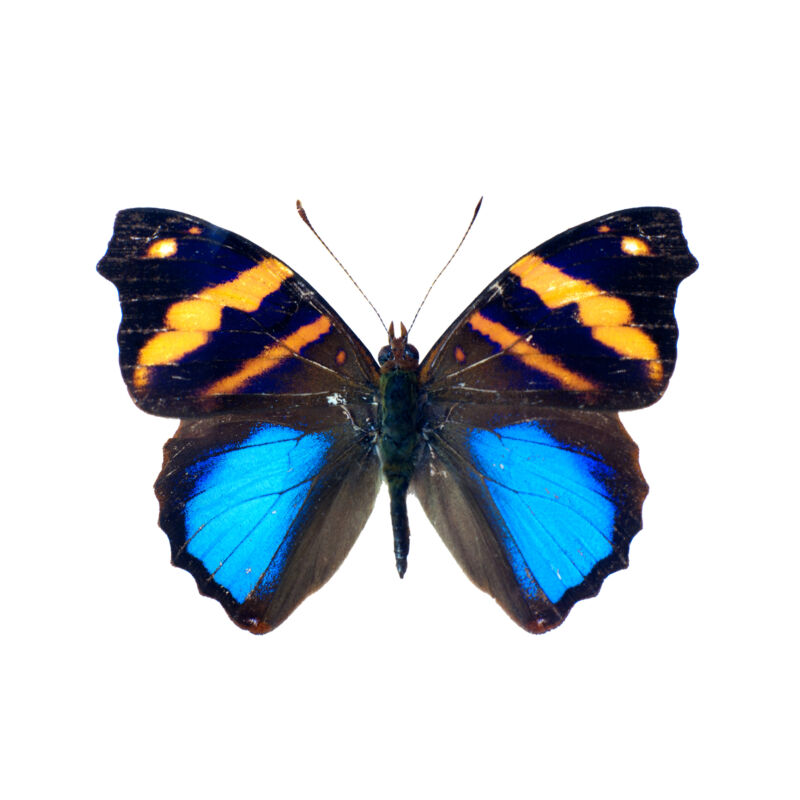Colorless nanoparticles used to create lightweight, colorful paint

Enlarge / Materials in a butterfly's wing create color by altering the paths taken by some wavelengths of light. This was the inspiration for a new form of paint. (credit: Getty Images)
Do you know more than 50 percent of microplastic pollution in our oceans comes from color paints? Almost every object that people throw into the ocean, whether it be a broken toy, a small bottle cap, or a shoe, has some sort of color coating. While you might try to collect all the plastic objects that are thrown into the oceans, there is no way to gather the microplastics that have already mixed into the water.
Particles derived from paint aren't only a problem in the ocean; they also mix into the air that you breathe. In 2010, scientists studied the effect of chemicals that are used in commercial wall paint on children's health. They found that kids who sleep in rooms with walls coated with paint having high levels of volatile organic compounds (VOCs) are more likely to develop medical conditions like eczema and asthma.
So does that mean commercial paint materials will continue to degrade our environment and our health? Well, there is a new ray of hope. Researchers from the University of Central Florida (UCF) recently published a study that describes plasmonic paint," a lightweight, eco-friendly material that has the potential to replace most colored coatings. They claim that their plasmonic paint is also the lightest paint in the world because it avoids the use of pigments and all the materials needed to hold the pigments in place.